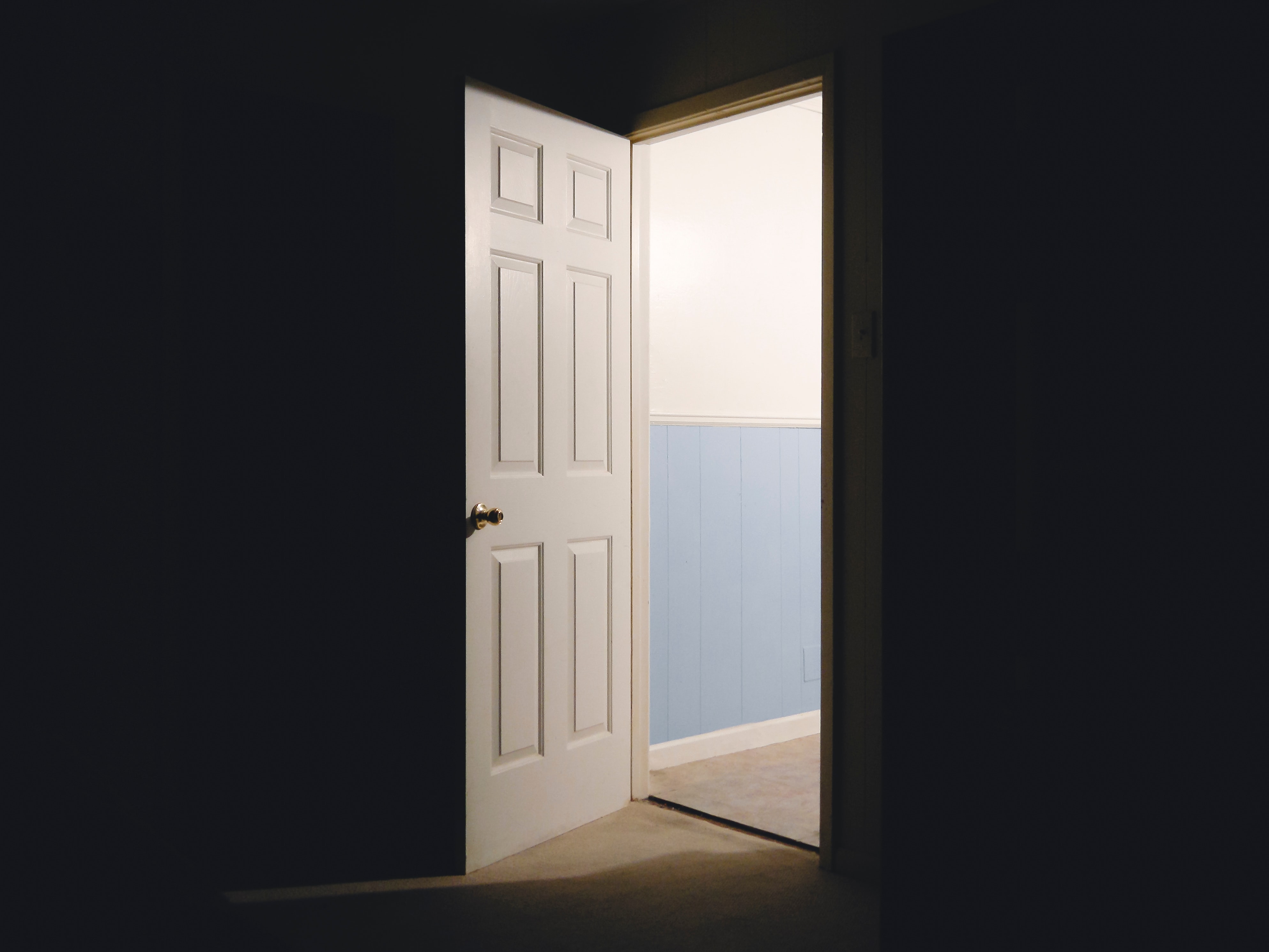As an ongoing part of WCET’s efforts to help faculty and staff respond to the pandemic, today Dr. Tanya Spilovoy, our resident Open Educational Resources (OER) expert, takes a look at the role openness and OER can play as institutions move away from rushing to deliver remote instruction to more deliberately designed online courses for the summer term and beyond.
As Tanya discusses, OER can play a critical role in making education more affordable for students in these increasingly difficult economic times. Just as importantly, though, she discusses how the philosophy of openness can help build collaborations that will result in everything from more educational opportunities for students to better teaching resources to perhaps even a vaccine for the novel coronavirus.
WCET is glad we can provide you with information that can both help you right now as well as begin to think about what is next for higher education.
Van Davis, WCET
We’re already talking about this time like other collectively devastating events in history (aka pre and post 9/11). We remember the joys of “Pre-Coronavirus,” and while we’re figuring out our strange existence in “Coronavirus,” everyone is wondering “What’s next?” What will “Post Coronavirus” look like?
A lot of us are asking how we can learn from this situation to make the future better. These are hard questions to answer while folks are dealing with so many personal, professional, and economic changes. But I believe that there is opportunity in chaos. If we pay attention to positive solutions, there is hope for a better future. The chaos and transition during the past few weeks have been difficult, but during that time, our people have demonstrated a resounding hope for a better, more open future.
How Open is Helping
With every depressing announcement that something we cherish has closed (schools, sports, churches, gyms, etc.), I was heartened (but not surprised) to see the swift, helpful response from everyone in the Open community. When I asked #OER Twitter to share the Open Community is doing to help, the answers were amazing. As a quick reminder, Open Educational Resources (OER) are teaching, learning and research materials in any medium – digital or otherwise – that reside in the public domain or have been released under an open license that permits no-cost access, use, adaptation and redistribution by others with no or limited restrictions” (The William and Flora Hewlett Foundation).
This is a partial list of what the Open Community is doing to help:
- Researchers have moved with unprecedented speed to find a COVID-19 vaccine due to the willingness of scientists to openly share findings through Open science and Open publishing platforms.
- The Association for Learning Technology (ALT) transitioned the #OER20 Conference “The Care in Open” to an online format so that everyone could participate remotely. My favorite sessions were Francis Bell’s “Femedtech Quilt of Care and Justice in Open Education” and #OER20 Zoom KaraOERke, where my daughter and I sang with homebound families around the world. Although COVID-19 had stopped in-person interactions, we found a way to stay connected.
- Open textbook authors and subject matter experts immediately flooded Twitter with a variety of open educational resources to assist panicked professors transitioning to online delivery.
- The Museum Computer Network (MCN) released the “Ultimate Guide to Virtual Museum Resources, E-Learning, and Online Collections”.
- Librarians pointed to online collections of open educational resources.
- Fair use experts united to provide guidance to teachers.
- Technologists shared open tech tools and strategies for online course delivery.
- The partnership of the United Nations Education, Scientific, and Cultural Organization (UNESCO), the International Council for Open and Distance Education (ICDE) , and the Open Education Resources Universitas (OERU) established an OER Support Group for educators transitioning to online during the COVID Crisis.
- Creative Commons launched the Open COVID Pledge that will help speed the efforts to find vaccines, test kits, and medicines during the pandemic.
- The Open Learning Initiative (OLI) at Carnegie Mellon University has made all of their courseware free for affected institutions. The OLI’s OER courseware “combines interactive textbooks with learning activities, assessments, and rich simulations. The materials are organized into units and modules that are aligned to learning objectives, so you can select OLI content to match your needs for the rest of the semester and plug it in to your learning management system.” (Open Learning Initiative).
- The NEBHE New England Journal of Higher Education published a piece by Lindsey Gumb “What’s Open During COVID-19? In Global Pandemic, OER and Open Access Matter More than Ever”
Going Open
 And then, the Open Community “opened,” and it wasn’t merely an echo chamber of the usual voices anymore.
And then, the Open Community “opened,” and it wasn’t merely an echo chamber of the usual voices anymore.
Suddenly, EVERYONE was going Open.
COVID-19, although horrible, has created an environment of unprecedented sharing and openness throughout the world. While many of the activities we’ve witnessed don’t fit the traditional parameters of open—mainly, open licensing—they clearly demonstrate openness in its purest forms of inclusion, access, social justice, sharing, and making the world a better place.
- The arts community has generously provided free Facebook concerts, comedy routines, musicals, and tours of art collections.
- Dolly Parton is reading bedtime stories; Keith Urban, Elton John, Lady Gaga, and Lizzo sang to quarantined viewers from their separate living rooms.
- Sir. Patrick Stewart is performing a sonnet a day.
- Exercise instructors are posting videos for folks to do free at-home workouts.
- Some tech vendors have made their resources and products free for a limited time to the public.
- People are filling little food pantries, donating plasma, & sewing masks for frontline workers.
Open, in its many forms (open education, open resources, open science, open publishing, open computing), is helping students, faculty, institutions, and researchers reduce costs and increase access (with same or better learning outcomes). It also enables scientists to work together on vaccines and medical solutions. Open is a making a positive difference during the COVID-19 crisis. You might be wondering, “How can we expand the momentum of all this Openness post-Coronavirus?”
Benefit to Institutions, Faculty and Students
OER saves money.
For states, systems, and institutional leaders worried about finances due to the pandemic’s economic downturn, Open Educational Resources are a solution. In February 2020, Achieving the Dream released OER at Scale: the Academic and Economic Outcomes of Achieving the Dream’s OER Degree Initiative.” The study “found that students enrolled in OER courses earned more credits than non-participating peers and that the effort was cost-effective not just for students but for institutions. Students at the participating colleges saved $10.7 million on the cost of learning materials. As courses became established, institutions were in position to recover their costs or even, in some instances, generate income from the effort as more students signed up for the OER courses.” States, systems, and institutions boast huge return on investment when they focus even small dollar amounts in open education.
OER = Equitable Access.
In the last few weeks, we’ve witnessed the whirlwind transition from traditional to “remote instruction.” Many teachers, P-20, frantically searched for appropriate learning materials to integrate with technology. The transition was smooth for students and faculty already using OER instead of publisher materials. There are entire courses, textbooks, supplemental materials, simulations, telescopes, etc. that are available to anyone to use. Faculty have the freedom to use and adapt OER for their courses. It’s important to mention that publishers temporarily lifting a paywall during a crisis isn’t OER, and it certainly isn’t a long-term solution; once the grace period is over the paywall will be reinstated. To ensure students have equitable, open access to learning materials, we’ll need to focus on long-term efforts on educational content that meets the definition of OER.
Dive into the Wave of Openness
While this crisis has presented many hurdles to overcome for higher education–such as student food and housing crises, unequal access to WIFI, probable state education funding cuts, and looming uncertainty regarding the effects of COVID-19 will have on Fall 2020’s enrollment numbers and our ability to be on campus.  My hope is that the education community will continue to embrace and expand Open. The Department of Education recently released the Open Textbook Pilot call for public comments in the federal register. The summary states “We intend this action to further develop and identify programs and practices that improve instruction and student learning outcomes, as well as increase access, affordability, and completion rates of students seeking postsecondary education degrees or other recognized credentials as a result of the development, enhancement, and use of open textbooks (as defined in this notice).”
My hope is that the education community will continue to embrace and expand Open. The Department of Education recently released the Open Textbook Pilot call for public comments in the federal register. The summary states “We intend this action to further develop and identify programs and practices that improve instruction and student learning outcomes, as well as increase access, affordability, and completion rates of students seeking postsecondary education degrees or other recognized credentials as a result of the development, enhancement, and use of open textbooks (as defined in this notice).”
I encourage each of you to dive into the wave of openness. There is something for everyone. Provide comments to the Department of Education by April 30th. While we all can’t do everything, each of us has the opportunity to spread more hope, joy, inclusion, and openness in the world. If you’re interested in finding openly-licensed resources, explore the links I’ve provided; there are endless open pedagogy and open educational resources available for your fall courses and programs. If you’re a leader looking for ways to help your institution or state during the Coronavirus crisis, there are excellent examples of Open Policy at the institution, system, and state level that will reduce cost and increase access for students. If you’re not sure where to start, you can contact me; I’m always happy to help. This is everyone’s opportunity to weigh in on what we’d like to see in the hopefully-soon post-Coronavirus era.

Tanya Spilovoy
Director, Open Policy, WCET
@TanyaSpilovoy tspilovoy@wiche.edu
Tanya Spilovoy, Ed. D., is the Director, Open Policy at WCET where she focuses on the policy, practice, and implementation of Open Educational Resources in states, systems, and higher education institutions. She is also the co-creator and instructor for the SPARC Open Education Leadership Program. Previously, she served as the Director of Distance Education and State Authorization at the North Dakota University System and has taught college English and English as a second language in K-12 and abroad. Spilovoy received her B.A. in English from Union College, a M.A. in Education from Hamline University, and a Doctorate in Higher Education Leadership and Organizational Change from Benedictine University.

Image Credits:
 And then, the Open Community “opened,” and it wasn’t merely an echo chamber of the usual voices anymore.
And then, the Open Community “opened,” and it wasn’t merely an echo chamber of the usual voices anymore. My hope is that the education community will continue to embrace and expand Open. The Department of Education
My hope is that the education community will continue to embrace and expand Open. The Department of Education 

3 replies on “Open in a Time of Crisis”
[…] during the pandemic. WCET has addressed accessibility, Veterans benefits, crisis coordination, Open Educational Resources, the U.S. Department of Education’s ability to exercise enforcement discretion for Title IV […]
[…] higher education. So far those posts have been focused on tangible concerns like lessons learned, open educational resources, professional licensure, and the use of chat bots to improve campus […]
[…] Director of Open Policy at WCET made a call to action to the educational community in the article Open in a Time of Crisis by stating, “my hope is that the education community will continue to embrace and expand […]